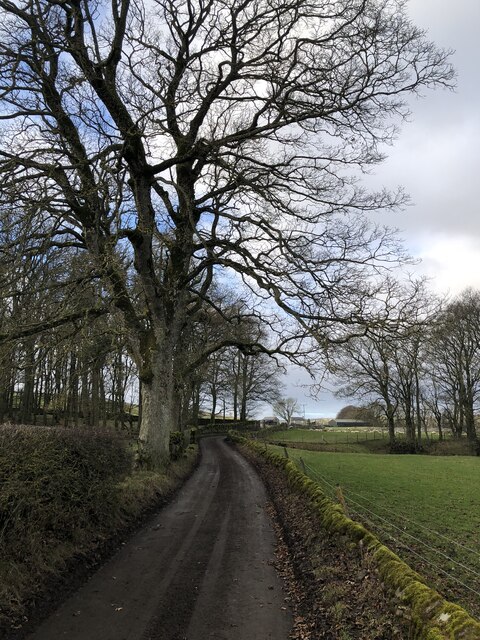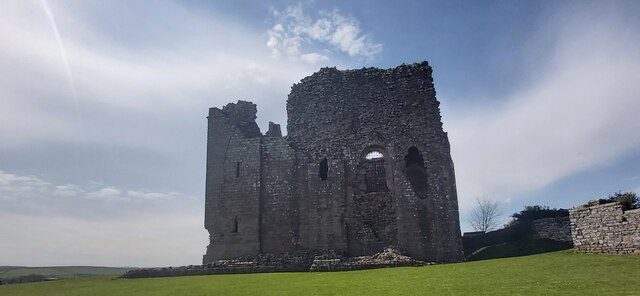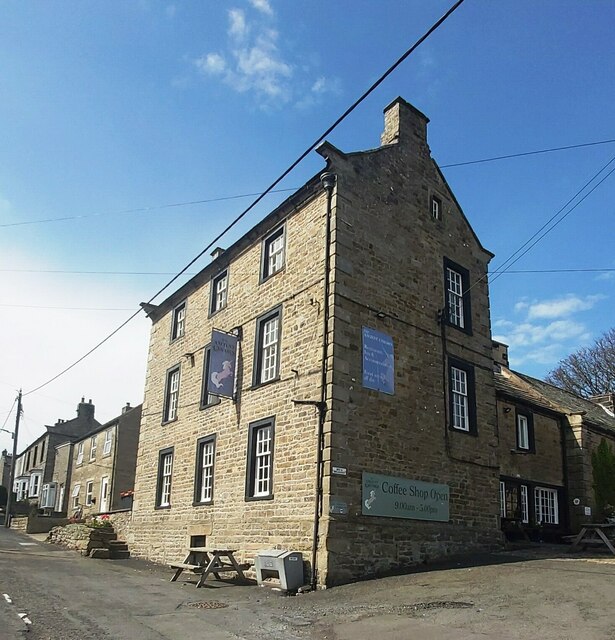Green Fell Plantation
Wood, Forest in Yorkshire
England
Green Fell Plantation
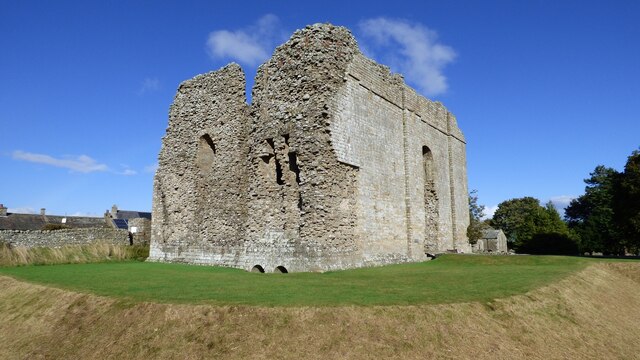
Green Fell Plantation is a picturesque woodland located in the heart of Yorkshire, England. Covering an expansive area of lush greenery, this plantation is a haven for nature enthusiasts and outdoor adventurers alike. With its dense forests and towering trees, it offers a serene and peaceful escape from the hustle and bustle of everyday life.
The plantation boasts a rich biodiversity, housing a wide variety of plant and animal species. It is home to numerous native tree species such as oak, beech, and birch, creating a diverse and vibrant ecosystem. The forest floor is carpeted with a tapestry of wildflowers, adding colors and fragrances to the surroundings.
Visitors to Green Fell Plantation can enjoy a range of activities. There are numerous well-maintained walking trails that wind through the woods, allowing visitors to immerse themselves in the beauty of nature. Cycling enthusiasts can also explore the plantation on designated bike paths. For those seeking a more tranquil experience, there are several designated picnic areas where visitors can relax and enjoy the peaceful ambiance.
The plantation is not only a recreational space but also serves as an important habitat for wildlife. Birdwatchers can spot various species of birds, including woodpeckers, owls, and warblers. Squirrels scurry amongst the branches, while deer can occasionally be spotted grazing in the meadows.
Overall, Green Fell Plantation offers a captivating blend of natural beauty and recreational opportunities. Whether it is a leisurely stroll through the woods or a family picnic amidst the enchanting surroundings, this woodland gem is a must-visit destination for nature lovers in Yorkshire.
If you have any feedback on the listing, please let us know in the comments section below.
Green Fell Plantation Images
Images are sourced within 2km of 54.501485/-2.0054949 or Grid Reference NY9911. Thanks to Geograph Open Source API. All images are credited.
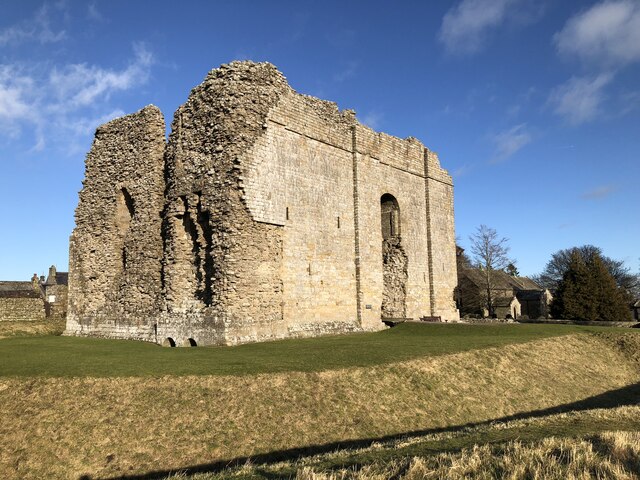

![Bowes houses [1] Bowes Hall, The Street, is a large house built in the early and later 17th century. The house was refronted and extended in the early or mid 18th century, when the two right bays and the top storey were added. Constructed of rubble stone, the later work squared and coursed, under a slate roof. Many original internal features and fittings remain. Listed, grade II, with details at: <span class="nowrap"><a title="https://historicengland.org.uk/listing/the-list/list-entry/1121071" rel="nofollow ugc noopener" href="https://historicengland.org.uk/listing/the-list/list-entry/1121071">Link</a><img style="margin-left:2px;" alt="External link" title="External link - shift click to open in new window" src="https://s1.geograph.org.uk/img/external.png" width="10" height="10"/></span>
Bowes is a village in County Durham, some 14 miles northwest of Richmond and about 18½ miles due west of Darlington. Set on the north bank of the River Greta, the village was, until by-passed, astride the A66 trunk road. The Romans had a fort here, guarding the Stainmore pass over the Pennines, and their site was reused by the Normans who built a castle. The village grew around the castle, and the name Bowes is first mentioned in a charter of 1148.](https://s2.geograph.org.uk/geophotos/07/33/30/7333050_16951f3a.jpg)
![Bowes features [1] The garden walls, gate piers and gates of Bowes Hall <a href="https://www.geograph.org.uk/photo/7333050">NY9913 : Bowes houses [1]</a> were erected in the mid 18th century. Squared, coursed rubble stone walls and ashlar gate piers with mid 19th century iron gates. Listed, grade II, with details at: <span class="nowrap"><a title="https://historicengland.org.uk/listing/the-list/list-entry/1310919" rel="nofollow ugc noopener" href="https://historicengland.org.uk/listing/the-list/list-entry/1310919">Link</a><img style="margin-left:2px;" alt="External link" title="External link - shift click to open in new window" src="https://s1.geograph.org.uk/img/external.png" width="10" height="10"/></span>
Bowes is a village in County Durham, some 14 miles northwest of Richmond and about 18½ miles due west of Darlington. Set on the north bank of the River Greta, the village was, until by-passed, astride the A66 trunk road. The Romans had a fort here, guarding the Stainmore pass over the Pennines, and their site was reused by the Normans who built a castle. The village grew around the castle, and the name Bowes is first mentioned in a charter of 1148.](https://s0.geograph.org.uk/geophotos/07/33/30/7333052_37337ce4.jpg)
![Bowes houses [2] Numbers 1 and 2 The Street are a pair of houses built in the mid or late 18th century with later alterations. Constructed of rubble stone under an artificial stone roof. Listed, grade II, with details at: <span class="nowrap"><a title="https://historicengland.org.uk/listing/the-list/list-entry/1159738" rel="nofollow ugc noopener" href="https://historicengland.org.uk/listing/the-list/list-entry/1159738">Link</a><img style="margin-left:2px;" alt="External link" title="External link - shift click to open in new window" src="https://s1.geograph.org.uk/img/external.png" width="10" height="10"/></span>
Bowes is a village in County Durham, some 14 miles northwest of Richmond and about 18½ miles due west of Darlington. Set on the north bank of the River Greta, the village was, until by-passed, astride the A66 trunk road. The Romans had a fort here, guarding the Stainmore pass over the Pennines, and their site was reused by the Normans who built a castle. The village grew around the castle, and the name Bowes is first mentioned in a charter of 1148.](https://s1.geograph.org.uk/geophotos/07/33/30/7333053_35f3ac31.jpg)
![Bowes buildings [1] Bowes Club, formerly the Bowes and District Working Men&#039;s Club, in The Street, was built as a house in the early or mid 18th century. Constructed of sandstone ashlar under a stone slate roof. The link section on the left is in rubble stone. The paired sashes windows have small lunette windows above. Listed, grade II, with details at: <span class="nowrap"><a title="https://historicengland.org.uk/listing/the-list/list-entry/1323029" rel="nofollow ugc noopener" href="https://historicengland.org.uk/listing/the-list/list-entry/1323029">Link</a><img style="margin-left:2px;" alt="External link" title="External link - shift click to open in new window" src="https://s1.geograph.org.uk/img/external.png" width="10" height="10"/></span>
Bowes is a village in County Durham, some 14 miles northwest of Richmond and about 18½ miles due west of Darlington. Set on the north bank of the River Greta, the village was, until by-passed, astride the A66 trunk road. The Romans had a fort here, guarding the Stainmore pass over the Pennines, and their site was reused by the Normans who built a castle. The village grew around the castle, and the name Bowes is first mentioned in a charter of 1148.](https://s2.geograph.org.uk/geophotos/07/33/30/7333054_cccc0490.jpg)
![Bowes houses [3] Croft House and Sunny Croft, The Street, are a pair of houses built in the late 18th century and extended on both sides. Constructed of coursed rubble stone under a stone slate roof. Listed, for group value, grade II, with details at: <span class="nowrap"><a title="https://historicengland.org.uk/listing/the-list/list-entry/1121033" rel="nofollow ugc noopener" href="https://historicengland.org.uk/listing/the-list/list-entry/1121033">Link</a><img style="margin-left:2px;" alt="External link" title="External link - shift click to open in new window" src="https://s1.geograph.org.uk/img/external.png" width="10" height="10"/></span>
Bowes is a village in County Durham, some 14 miles northwest of Richmond and about 18½ miles due west of Darlington. Set on the north bank of the River Greta, the village was, until by-passed, astride the A66 trunk road. The Romans had a fort here, guarding the Stainmore pass over the Pennines, and their site was reused by the Normans who built a castle. The village grew around the castle, and the name Bowes is first mentioned in a charter of 1148.](https://s2.geograph.org.uk/geophotos/07/33/30/7333058_842b947b.jpg)
![Bowes buildings [2] The Ancient Unicorn Hotel, The Street, a former coaching inn, has a rear wing of the 17th century, in two builds, which was altered and refronted. The front block is mid 18th century. The front block is of squared, coursed sandstone with squared, coursed rubble stone returns and rusticated quoins, under a slate roof; stone chimney stacks. The rear wing is of squared, coursed rubble stone with partly stone slate and partly slate roofs. Some early internal features and fittings remain. The building is reputedly haunted. Listed, grade II, with details at: <span class="nowrap"><a title="https://historicengland.org.uk/listing/the-list/list-entry/1323027" rel="nofollow ugc noopener" href="https://historicengland.org.uk/listing/the-list/list-entry/1323027">Link</a><img style="margin-left:2px;" alt="External link" title="External link - shift click to open in new window" src="https://s1.geograph.org.uk/img/external.png" width="10" height="10"/></span>
Bowes is a village in County Durham, some 14 miles northwest of Richmond and about 18½ miles due west of Darlington. Set on the north bank of the River Greta, the village was, until by-passed, astride the A66 trunk road. The Romans had a fort here, guarding the Stainmore pass over the Pennines, and their site was reused by the Normans who built a castle. The village grew around the castle, and the name Bowes is first mentioned in a charter of 1148.](https://s1.geograph.org.uk/geophotos/07/33/30/7333093_40cd01c6.jpg)
![Bowes features [2] An elderly RAC &#039;Get You Home&#039; sign in The Street.
Bowes is a village in County Durham, some 14 miles northwest of Richmond and about 18½ miles due west of Darlington. Set on the north bank of the River Greta, the village was, until by-passed, astride the A66 trunk road. The Romans had a fort here, guarding the Stainmore pass over the Pennines, and their site was reused by the Normans who built a castle. The village grew around the castle, and the name Bowes is first mentioned in a charter of 1148.](https://s0.geograph.org.uk/geophotos/07/33/31/7333148_94906e75.jpg)
![Bowes houses [5] Cross House and Hill House, The Street, are a pair of houses, built circa 1840 with later alterations. Constructed of squared, coursed rubble stone under a stone slate roof. Listed, grade II, with details at: <span class="nowrap"><a title="https://historicengland.org.uk/listing/the-list/list-entry/1323028" rel="nofollow ugc noopener" href="https://historicengland.org.uk/listing/the-list/list-entry/1323028">Link</a><img style="margin-left:2px;" alt="External link" title="External link - shift click to open in new window" src="https://s1.geograph.org.uk/img/external.png" width="10" height="10"/></span>
Bowes is a village in County Durham, some 14 miles northwest of Richmond and about 18½ miles due west of Darlington. Set on the north bank of the River Greta, the village was, until by-passed, astride the A66 trunk road. The Romans had a fort here, guarding the Stainmore pass over the Pennines, and their site was reused by the Normans who built a castle. The village grew around the castle, and the name Bowes is first mentioned in a charter of 1148.](https://s2.geograph.org.uk/geophotos/07/33/31/7333162_b6a851c2.jpg)
![Bowes features [3] In the garden of Cross House on The Street <a href="https://www.geograph.org.uk/photo/7333162">NY9913 : Bowes houses [5]</a> is this base and stump of a cross shaft. Medieval, of sandstone. Listed, grade II, with details at: <span class="nowrap"><a title="https://historicengland.org.uk/listing/the-list/list-entry/1159719" rel="nofollow ugc noopener" href="https://historicengland.org.uk/listing/the-list/list-entry/1159719">Link</a><img style="margin-left:2px;" alt="External link" title="External link - shift click to open in new window" src="https://s1.geograph.org.uk/img/external.png" width="10" height="10"/></span>
Bowes is a village in County Durham, some 14 miles northwest of Richmond and about 18½ miles due west of Darlington. Set on the north bank of the River Greta, the village was, until by-passed, astride the A66 trunk road. The Romans had a fort here, guarding the Stainmore pass over the Pennines, and their site was reused by the Normans who built a castle. The village grew around the castle, and the name Bowes is first mentioned in a charter of 1148.](https://s1.geograph.org.uk/geophotos/07/33/42/7334253_0e313df9.jpg)
![Bowes buildings [3] The premises of Bowes Hutchinson&#039;s Church of England (Aided) School. A primary, co-educational school. Built in the late 19th century of rubble stone with ashlar dressings under a stone slate roof.
Bowes is a village in County Durham, some 14 miles northwest of Richmond and about 18½ miles due west of Darlington. Set on the north bank of the River Greta, the village was, until by-passed, astride the A66 trunk road. The Romans had a fort here, guarding the Stainmore pass over the Pennines, and their site was reused by the Normans who built a castle. The village grew around the castle, and the name Bowes is first mentioned in a charter of 1148.](https://s2.geograph.org.uk/geophotos/07/33/42/7334254_ce8ffd90.jpg)
Green Fell Plantation is located at Grid Ref: NY9911 (Lat: 54.501485, Lng: -2.0054949)
Division: North Riding
Unitary Authority: County Durham
Police Authority: Durham
What 3 Words
///commoners.scoring.portfolio. Near Bowes, Co. Durham
Nearby Locations
Related Wikis
Gilmonby
Gilmonby is a village in the Pennines in County Durham, England. it is situated a short distance to the south of Bowes, in the vicinity of Barnard Castle...
Bowes
Bowes is a village in the historic county of Yorkshire and, since 1974, in the ceremonial county of County Durham, England. Located in the Pennine hills...
Bowes Castle
Bowes Castle is a medieval castle in the village of Bowes in County Durham, England. Built within the perimeter of the former Roman fort of Lavatrae, on...
Bowes railway station
Bowes railway station was situated on the South Durham & Lancashire Union Railway between Barnard Castle and Kirkby Stephen East. == History == The line...
Nearby Amenities
Located within 500m of 54.501485,-2.0054949Have you been to Green Fell Plantation?
Leave your review of Green Fell Plantation below (or comments, questions and feedback).
